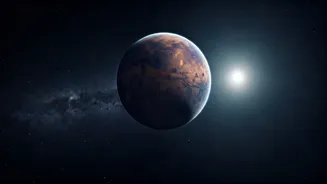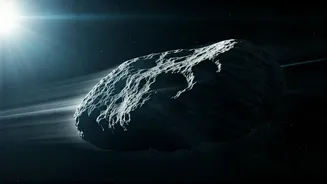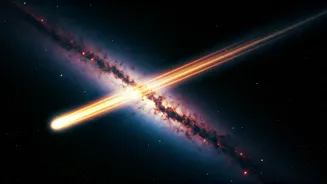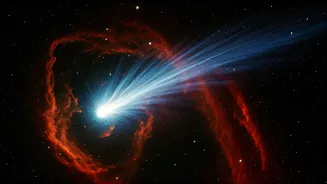The Solar System’s Edge
Our solar system isn't just the planets we see every day; it extends far beyond Neptune. This vast region, often called the Kuiper Belt, is filled with
icy objects and dwarf planets. These objects don't orbit in a neat, orderly fashion like the inner planets. Some exhibit peculiar orbital patterns, which has led astronomers to suspect that something massive is gravitationally influencing them from afar. Understanding this outer solar system is crucial to understanding the formation and evolution of our planetary system. The search for Planet Nine is, therefore, a deep dive into the unknown, a quest to find a missing piece of the puzzle that explains the unusual motions of celestial objects at the edge of our cosmic neighborhood. It's a challenging endeavor, due to the planet's likely great distance from the sun, which makes it extremely dim and difficult to detect with current technology.
Clues in Orbit
The evidence pointing toward Planet Nine primarily comes from observing the orbits of objects in the outer solar system, specifically Trans-Neptunian Objects (TNOs). Several of these TNOs exhibit unusual orbital clustering. They seem to be aligned in a specific way that can't be explained by the gravitational influence of known planets or other factors. This clustering is what initially sparked the hypothesis of a large, unseen planet. The calculations show that a planet with a significant mass, likely several times that of Earth, located far from the Sun, could be the gravitational shepherd, maintaining these orbital patterns. Astronomers have analyzed the movements of these icy bodies to infer the possible size, orbit, and location of the hypothetical Planet Nine. This detective work hinges on precise measurements and complex computer simulations to see whether these unusual patterns truly suggest a hidden planet.
Hunting Techniques Unveiled
The search for Planet Nine is a sophisticated process that leverages various tools and techniques. Astronomers use powerful telescopes, both ground-based and space-based, to scan large areas of the sky. These instruments allow them to detect faint objects and to observe subtle movements over time. The primary method is to carefully survey vast swathes of sky, looking for faint objects that might be influenced by a large planet's gravity. The telescopes they use are equipped with sophisticated cameras and detectors to capture the faint light emitted or reflected by distant objects. Furthermore, scientists use computer models and simulations to predict the possible location of Planet Nine, based on the observed orbital patterns of the TNOs. These predictions guide the search efforts and help astronomers narrow down their focus. It's akin to searching for a needle in a cosmic haystack, requiring patience, precision, and the right equipment.
Challenges and Hurdles
The quest for Planet Nine isn't straightforward. Its predicted distance from the Sun makes it incredibly faint and challenging to spot. Its expected location is very far out, meaning it receives little sunlight. This means any reflected light is very dim. In addition, the vastness of the search area poses a major challenge. The telescopes need to scan vast regions of space, which is time-consuming and requires significant resources. There are also potential observational biases. Some orbital patterns might appear to be aligned due to the way we observe the sky from Earth, regardless of the presence of any unseen planet. Scientists must account for these potential biases to ensure that their findings are reliable. The search requires significant time investment, technological capability, and diligent effort, meaning the discovery of Planet Nine will take more time.
Future Discoveries
The continued search for Planet Nine is a critical part of planetary science. If discovered, it would rewrite our understanding of the solar system's formation and evolution. The discovery of Planet Nine would provide further evidence of the gravitational influences that have shaped the orbits of other objects. The presence of Planet Nine might also mean that our solar system has a more complicated structure than previously considered. Finding it could reveal new insights into the dynamics of the outer solar system and perhaps even suggest the presence of other, even more distant, objects. Scientists are preparing for the future by developing new technologies. These advances include more sensitive telescopes and advanced data analysis techniques, which are crucial for the continued hunt. The search for Planet Nine symbolizes humanity’s endless curiosity about the cosmos.













